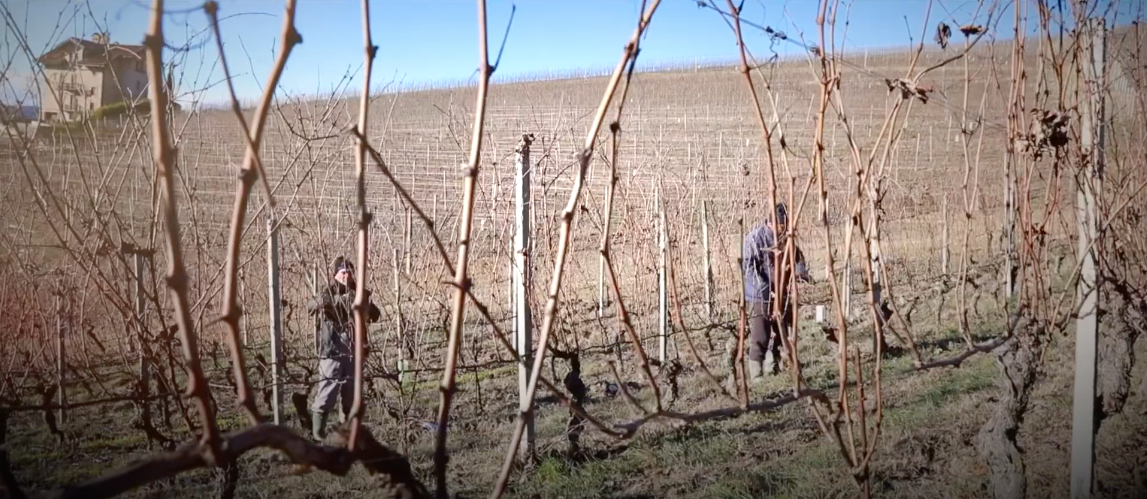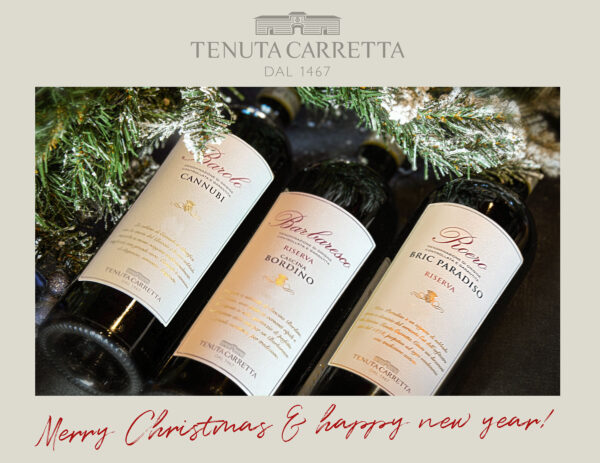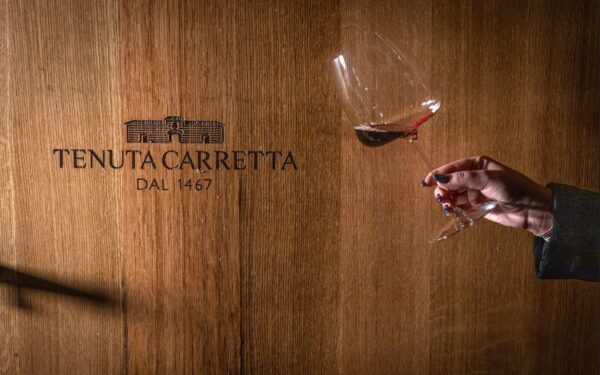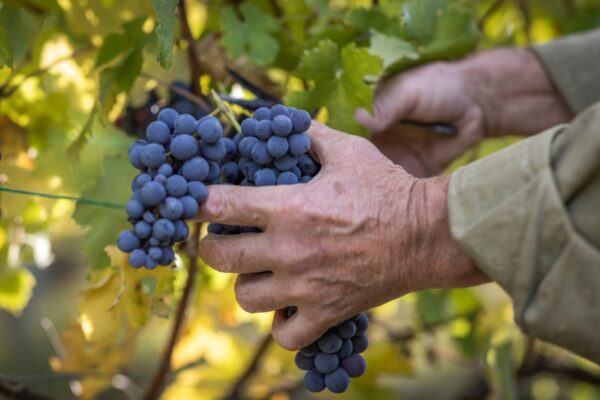• Winery, Hospitality, Wines
What is winter pruning?
Reading time in

What is winter pruning and why is it done?
In this entry, Giuseppe Cavallo, agronomist at Tenuta Carretta, explains one of the most delicate and important winegrowing operations.
Why is pruning done during winter?
Winter pruning is the first agronomic activity of every new wine year, the one that starts a new production cycle. Pruning revives the productive part of the plant: a new branch is selected, called “fruit bearing cane”, and it will generate new buds that will grow into new bunches.
When is the best period for pruning and how can this period be identified?
Pruning is done during the winter season, when the plant has finished its productive cycle and is in the dormancy stage. Approximately from the beginning of December to the end of February / mid-March. This time period can greatly vary as it depends on the climatic trend. To respect the plant’s natural cycle, before pruning, one must wait for the first late autumn frosts, in order to reach a certain level of daily cold weather that enables the plant to “go to sleep”. Conversely, pruning must be completed before the rise in temperature, which warms up the soil and the air, awakening the plant.
What directions do you follow when pruning the vineyards of Tenuta Carretta? Are there any particular precautions based on the type of vine, plot, microclimate or the results pursued?
Tenuta Carretta is vast and varied: so, it is necessary to carefully plan the various cultivation operations, including pruning. Priority is given to the most suitable areas, which are usually located on the most exposed and ventilated slopes. On the other hand, the wetter and less exposed areas come last: this is to minimize the possibility of infections brought about by fungal pathogens normally present in the air, which take advantage of pruning cuts to infect the plant. For each vineyard, the load of buds per plant is determined according to the amount of production pursued: we establish the number of buds to be left on the fruit-bearing cane based on the soil and climatic location of the vineyard, and consequently the expectations for the plant. Other elements also contribute to determining the number of buds, such as soil fertility, vigor and age of the plants.
Does Tenuta Carretta adopt regenerative operations of the woody part of the vine?
For some years now, greater attention has been paid to pruning to avoid excessive “renewal pruning”. Cuts are limited to woody portions that are 2 years old at most, in order to not create large wounds that can unintentionally serve as a gateway to pathogenic fungi that colonize wood. This technique, and observing the best timing for pruning, allow the containment of degenerative diseases of the wood.


